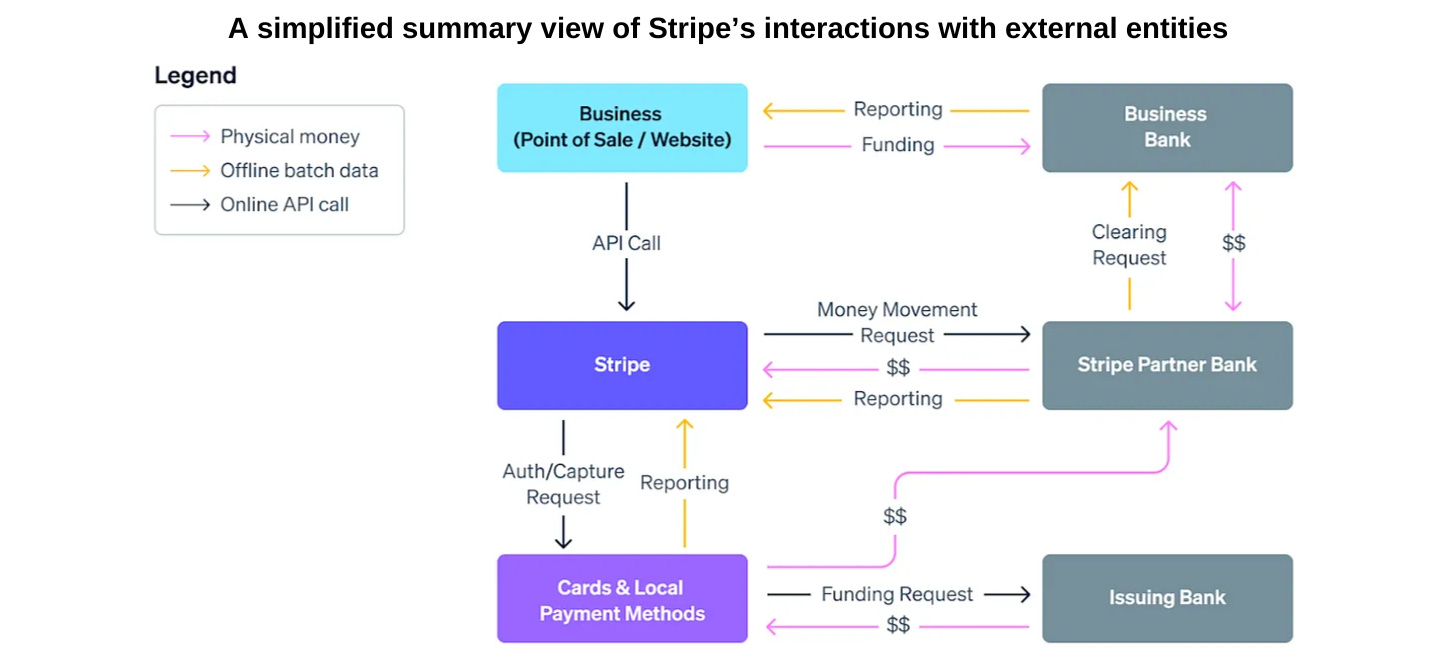Deep Dive: Ledger: Stripe’s system for tracking and validating money movement
Stripe is raising the bar for financial infrastructure with its Ledger system—a cutting-edge solution designed to track, validate, and standardize global money movement with precision and scalability
TL;DR:
In this Deep Dive, I’m taking a closer look at how Stripe’s Ledger system is setting a new standard for financial data management in fintech. Ledger is a scalable, immutable system designed to track and validate every financial transaction across Stripe’s Global Payments and Treasury Network (GPTN). It provides a unified, real-time view of all money movement, ensuring data accuracy, streamlining reconciliation, and meeting complex regulatory requirements.
What makes Ledger so impressive is its automation of data validation and error detection, reducing operational risks and ensuring financial records remain consistent and reliable. This system supports Stripe’s ability to manage vast transaction volumes globally without compromising on accuracy or compliance. It’s a powerful example of how fintech leaders are innovating back-end infrastructure to support seamless, secure, and scalable payment systems.
As fintech continues evolving, solutions like Ledger highlight the importance of building resilient, adaptable financial systems to meet the demands of a global economy.
Ledger: Stripe’s system for tracking and validating money movement
In 2023 Black Friday to Cyber Monday, Stripe processed 300 million transactions with a total payment volume of $18.6B—and the Stripe API maintained greater than 99.999% availability. Underlying these metrics is Stripe’s Global Payments and Treasury Network (GPTN) that manages the complexity of accepting payments, money storage, and money movement. Today, Stripe supports more than 135 currencies and payment methods through partnerships with local banks and financial networks in 185 countries. These entities provide different interfaces, data models, and behaviors, and Stripe continually manages this complexity so developers can quickly integrate the GPTN into their businesses.
Internally, Stripe needs to guarantee that what we expect to happen during payment processing actually happens for internal customers and external auditors of its data. Stripe built Ledger, an immutable and auditable log, as a trustworthy system of record for all of Stripe’s financial data. Ledger standardizes Stripe’s representation of money movement, and it serves as the scalable foundation for Stripe’s automated Data Quality (DQ) Platform—guaranteeing Stripe faithfully manages money for users.
Many existing systems provide primitives for accurate accounting, but the real world is imperfect, incomplete, and constantly changing. Stripe witnesses basic and obvious failures like malformed reports or propagated errors from banking or network partners, and also broad macroeconomic changes such as currencies ceasing to exist or large banks collapsing overnight. While Stripe aspires to an orderly ideal, at Stripe scale, that’s impossible—instead Stripe built a system that keeps these imperfections manageable and bounded.
Ledger models internal data-producing systems with common patterns, and it relies on proactive alerting to surface issues and proposed solutions. Each day, Ledger sees five billion events and 99.99% of Stripe's dollar volume is fully ingested and verified within four days. Of that activity, 99.999% is monitored, categorized, and triaged through rich investigative tooling—while the remaining long-tail is reliably handled through manual analysis. Together, Ledger and the DQ Platform ensure over 99.9999% explainability of money movement, even as Stripe’s data volume has grown 10x.
In this blog post, we’ll share technical details on how Stripe built this state-of-the-art money movement tracking system, and describe how teams at Stripe interact with the data quality metrics that underlie Stripe's global payments network.
How Stripe processes payments
The GPTN in part is a payment processing network consisting of customer business calls to Stripe’s API and Stripe’s interactions with a variety of banks and payment




